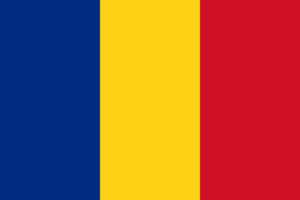History of Romania:
Romania is 200 BC. It was created BC by a Thracian tribe called the Dacians. In 106 AD, the Dacians were conquered by the Romans and Emperor Trajan. The area became a Roman province. About 160 years later, the Romans left the region, making Romania the first province they abandoned. Over the next 100 years, the area was invaded by Goths, Huns, Bulgars and others.
During the Middle Ages, two major principalities emerged from this region: Moldova and Wallachia. Conquered by the Ottoman Empire in the 15th century, it was reunited in 1859 under Alexander Kuza. The country gained her full independence in 1878 with the Treaty of Berlin. The first king of Romania was Karol von Hohenzollern Sigmaringen.
After World War I, Romania conquered the territory of Transylvania, but defected in World War II and joined Hitler’s Nazi Germany. In 1944, the government was overthrown in a coup led by King Mihai. Romania then defected and joined the Allies against Germany.
After the war, the Soviet Union occupied Romania for several years, turning it into a puppet communist state under dictator Nicolae Ceausescu. However, in 1996 the communists were ousted from power, allowing Romania to join the European Union in 2007.
Information about Romania:
| Capital | Bucharest |
| Population | 19,892,812 (Source: 2023 worldometer) |
| Major Cities | Bucharest (capital), Brasov, Timisoara, Sibiu, Cluj Napoc, Oradea, Constanta, Suceava. |
| Borders | Ukraine to the north, Moldova to the northeast, the Black Sea to the southeast, Bulgaria to the south, Serbia to the southwest, and Hungary to the west |
| Gross Domestic Product (GDP) | $301,262,000,000 (2022 worldometer) |
| Currency | leu (ROL) is being phased out in 2006; new leu (RON) was introduced in 2005 due to currency revaluat |
Flag of Romania:
Romania Economy Key Industries:
Romania Major Industries: textiles and footwear, light machinery and auto assembly, mining, timber, construction materials, metallurgy, chemicals, food processing, petroleum refining
Romania Agricultural Products: wheat, corn, barley, sugar beets, sunflower seed, potatoes, grapes; eggs, sheep
Romania Natural Resources: petroleum (reserves declining), timber, natural gas, coal, iron ore, salt, arable land, hydropower
Romania Major Exports: textiles and footwear, metals and metal products, machinery and equipment, minerals and fuels, chemicals, agricultural products
Romania Major Imports: machinery and equipment, fuels and minerals, chemicals, textile and products, basic metals, agricultural products
The Geography of Romania:
Total Size of Romania: 238,397 km² (source: 2022 wikipedia)
Geographical Low Point of Romania: Black Sea 0 m
Geographical High Point of Romania: Moldoveanu 2,544 m
Climate of Romania: Temperate; cold, cloudy winters with frequent snow and fog; sunny summers with frequent showers and thunderstorms
General Terrain of Romania: central Transylvanian Basin is separated from the Plain of Moldavia on the east by the Carpathian Mountains and separated from the Walachian Plain on the south by the Transylvanian Alps
World Region or Continent of Romania: Europe
Geographical Coordinates: 46 00 N, 25 00 E
The People of Romania & Culture
Romania Government Type: republic
Romania Nationality: Romanian(s)
Romania National Holiday: Unification Day (of Romania and Transylvania), 1 December (1918)
Romania Independence: 9 May 1877 (independence proclaimed from the Ottoman Empire; independence recognized 13 July 1878 by the Treaty of Berlin; kingdom proclaimed 26 March 1881); 30 December 1947 (republic proclaimed)
Romania National Symbol: golden eagle
Romania National Anthem or Song: Desteapta-te romane! (Wake up, Romanian!)
Romania Languages Spoken: Romanian (official), Hungarian, German
Romania Religions: Eastern Orthodox (including all sub-denominations) 86.8%, Protestant (various denominations including Reformate and Pentecostal) 7.5%, Roman Catholic 4.7%, other (mostly Muslim) and unspecified 0.9%, none 0.1% (2002 census)
Interesting Facts about Romania:
The name “Romania” comes from the Latin word “Romanus”, which means “citizen of the Roman Empire”.
The Parliament Building in Bucharest, Romania’s capital, is his second largest building in the world after the Pentagon. The height of the building is 84 meters. It is also the heaviest building in the world.
The tallest wooden church in the world, and his second tallest wooden structure in Europe, is the Peri Monastery in Maramures, Romania. The height of the church is 78 meters, and the height of the cross is 7 meters.
Over 60% of the European brown bear population lives in this country. Here, tourists can also meet Europe’s largest mammal, the bison. The animal was hunted to near extinction, but can now be seen in the wild in several European countries, including Romania.
Transfagarasan is said to be the most beautiful road in the world. Built in the 70s as a strategic military road, this road is a work of engineering excellence that will put your driving skills to the test.
Transfagarasan is a breathtaking landscape with 90 kilometers of tunnels, viaducts and bridges. It’s precisely these road wonders that make Romania such a great destination, especially for road trippers.
The Skalisoara Cave Glacier is her second largest underground glacier in Europe. It is located at the foot of the Bihor Mountains. It has a volume of 75,000 cubic meters and has been around for over 3,500 years.
The first perfect 10 in Olympic history was awarded to Romanian gymnast Nadia Comaneci for her uneven bars performance in Montreal, Canada in 1976.



